THOMSON & TUCKER ON SCARFACE
AND SCARFACE MONTAGE MAKES BLOGGER'S TOP TEN LIST The Untouchables
The Untouchables isn't the only
Brian De Palma film feeling the love from critics amidst the heat of
Michael Mann's
Public Enemies.
Pauline Kael stated that
Scarface was "a De Palma movie for people who don't like De Palma movies."
David Thomson fits that bill perfectly, as he hates most De Palma films, but loves De Palma's
Scarface. Thomson, generally unimpressed with Mann's
Public Enemies,
offers his list of ten great gangster films, courtesy of the Irish Times. Listed chronologically, De Palma's film is number nine, right before
Martin Scorsese's
GoodFellas. Here's what Thomson wrote about
Scarface:
Howard Hawks’s Scarface (1932), in which Paul Muni played a version of Al Capone, is a deserved classic, but the 1983 remake, written by Oliver Stone and directed by Brian De Palma, is even better. For a start, shifting the action to Miami and making Tony Montana an outlaw from Castro’s Cuba is very clever, and it allows Al Pacino to play with a Cuban accent the way a cat teases a dying bird. It was as if all the restraints Pacino had respected to play Michael Corleone were tossed aside. Beyond that, this Scarface is a modern opera (with music by Giorgio Moroder) that builds from the first bloody job on Miami Beach to the assault on Tony’s cocaine palace by Colombian thugs. Along the way, we get deliciously sleazy performances from F Murray Abraham, Harris Yulin and Robert Loggia as low-lifes for whom Tony finds appropriate executions. Then there is the young Michelle Pfeiffer as the bad-tempered prize Tony craves, and Mary Elizabeth Mastrantonio as the sister he can share with no one.
TUCKER: DE PALMA GAVE PFEIFFER ONE OF THE MOST SPECTACULAR ENTRANCES
Meanwhile, sparked by Mann's latest, Entertainment Weekly's Ken Tucker (author of Scarface Nation) is offering an "EW University" gangster movie class all week long. In today's lesson, Tucker discusses the role of women in gangster movies, with a focus on Pfeiffer's Elvira:
Who’s the most famous, most recognizable female character in the gangster-film genre? I’d have to say Elvira Hancock, wife of Tony Montana in the 1983 Scarface. Since a lot of gangster movies are period pieces set during the Prohibition Era, it’s not surprising that women have been largely relegated to being gold digger girlfriends – “molls” -- or innocent companions or mothers of the male protagonists. It wasn't until the World War II era, when there were more women sitting in movie-theater audiences, that the female roles were made more substantial. There are enough exceptions to this rule, however, to make women in gangster films an intriguing area of EW University study. Most immediately, Marion Cotillard, as John Dillinger’s famous real-life moll Billie Frechette, is more of a presence than your average gangster accompaniment in the new Public Enemies; director Michael Mann didn’t cast this excellent actress (La Vie en Rose) to have her stand around and simper. But let’s go back to Elvira in Scarface. This was Michelle Pfeiffer’s star-making role. Director Brian De Palma gave her one of the most spectacular entrances in movie history: dressed in a slinky dress that hugged every curve, Elvira descends slowly from a glass elevator, with Pacino’s Tony momentarily speechless, in awe. Wearing a blonde pageboy hairdo and talking tough, Elvira ends up matching Tony curse for curse and, as their cocaine consumption increases, toot for toot. This is a far cry from the original 1932 Scarface’s femme fatale, Poppy, played by Karen Morley. She’s little more than a pretty trinket Paul Muni’s Scarface Tony Camonte wears on his arm; the real woman in this movie is Scarface’s sister, Cesca, portrayed by Ann Dvorak. She’s so loyal, she grabs a gun and stays by her brother’s side for the film’s final shoot-out. The clear implication throughout the film, although this could never be stated outright, of course, is that Scarface’s sister loves him more — is more like a faithful lover or wife — than his girlfriend is.
SCARFACE MONTAGE TAKES IT TO THE LIMIT
Warren J. Cantrell's top ten list of movie montages, posted at Scene Stealers, is not specifically related to gangster films, but it does feature Scarface up there in the top five. Here is what Cantrell says about the montage:
Money. That’s not only a description of this montage, but the image that kicks it off and sweet-Christ, is there a lot of it! After solidifying his position as the go-to man for cocaine imports and distribution in Miami, Tony Montana (Al Pacino) goes to work maximizing his power base in the vacuum left in Frank’s absence. Wisely moving through what looks to be as many as six months of expansion and growth, director Brian De Palma gives the audience not-so-subtle hints regarding the extent of Tony’s ascension. We watch the spread of the protagonist’s influence through multiple business ventures, a chic wedding (that showcases a fucking domesticated tiger), lines of men marching into a bank with duffel bags full of money, and a good-for-nothing junkie wife that is in it for the gravy. The montage has been parodied before, and for good reason, as it is absolutely dripping with cheese (the background track rivals Bloodsport’s in sheer awesome-per-square inch), yet isn’t that the point? The film is a salute to the possibilities of life in the United States for any person with balls solid enough to take what is there. In Tony Montana, America found a willing taker, a victim of this country’s lop-sided promise who, while tough as nails and quite willing, did not understand the basic necessity of freedom: restraint. A microcosm of the thematic elements of the film at large, the montage represents both Tony at the peak of his power, yet in the midst of what will ultimately ruin him. It is Tony’s blind embrace of the American dream (and the idea that one must keep reaching for more) that will doom him, for he doesn’t understand (nor will he ever) that balls might be what it takes to get to the top, but that brains are needed to stay there. The song here is “Take It To the Limit,” and for good reason, as the montage demonstrates Tony doing what he does best, mainly chewing through everything and everyone to get higher up the social ladder (the tragic inevitability, of course, is that once to the top, to keep trying to climb will mean a terrible fall).
 31-year-old Jake Goldberger's feature debut, Don McKay, won him the Best Director award at Cincinnati's Oxford International Film Festival this week. The film stars Thomas Haden Church (who also coproduced), Elisabeth Shue, and Melissa Leo. According to CityBeat's Jason Gargano, Goldberger told the audience at the OIFF postscreening Q&A that his inspirations for the film are Joel and Ethan Coen's Blood Simple (that film's M. Emmet Walsh has a part in Don McKay) and early Brian De Palma films. Gargano calls those name checks curious, but The Envelope's Scott Feinberg, writing about the film after it played at this year's Tribeca Film Festival, said that Don McKay "is a mind-twister that fails to fall neatly under any traditional genre label -- it blends horror, romance, drama, comedy and even film noir in a way that is somewhat evocative of early Coen Brothers films such as Blood Simple and Miller's Crossing, if not nearly as polished." Sounds intriguing, to say the least. Gargano writes that the film should see a theatrical release later this year. Below is a clip, courtesy of Variety blogger Anne Thompson, who describes the film as a "twisty thriller."
31-year-old Jake Goldberger's feature debut, Don McKay, won him the Best Director award at Cincinnati's Oxford International Film Festival this week. The film stars Thomas Haden Church (who also coproduced), Elisabeth Shue, and Melissa Leo. According to CityBeat's Jason Gargano, Goldberger told the audience at the OIFF postscreening Q&A that his inspirations for the film are Joel and Ethan Coen's Blood Simple (that film's M. Emmet Walsh has a part in Don McKay) and early Brian De Palma films. Gargano calls those name checks curious, but The Envelope's Scott Feinberg, writing about the film after it played at this year's Tribeca Film Festival, said that Don McKay "is a mind-twister that fails to fall neatly under any traditional genre label -- it blends horror, romance, drama, comedy and even film noir in a way that is somewhat evocative of early Coen Brothers films such as Blood Simple and Miller's Crossing, if not nearly as polished." Sounds intriguing, to say the least. Gargano writes that the film should see a theatrical release later this year. Below is a clip, courtesy of Variety blogger Anne Thompson, who describes the film as a "twisty thriller." 



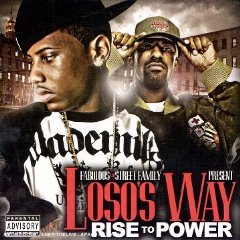 P.S. Just found out that Fabolous and Street Family put out a collection in 2006 titled Loso's Way: Rise To Power. So they did the prequel before the sequel-- go figure.
P.S. Just found out that Fabolous and Street Family put out a collection in 2006 titled Loso's Way: Rise To Power. So they did the prequel before the sequel-- go figure. "Nobody benefits when critics are as apolitical as the films they criticize," writes critic David Sterritt in regards to the critical praise heaped on Kathryn Bigelow's The Hurt Locker, currently making its way in theaters throughout the U.S. The critical consensus does seem to be that Bigelow's film lacks any political viewpoint (is this even truly possible?), and that it is all the better for it. There have been a couple of negative reviews of The Hurt Locker posted at Andrew Breitbart's conservative-minded
"Nobody benefits when critics are as apolitical as the films they criticize," writes critic David Sterritt in regards to the critical praise heaped on Kathryn Bigelow's The Hurt Locker, currently making its way in theaters throughout the U.S. The critical consensus does seem to be that Bigelow's film lacks any political viewpoint (is this even truly possible?), and that it is all the better for it. There have been a couple of negative reviews of The Hurt Locker posted at Andrew Breitbart's conservative-minded 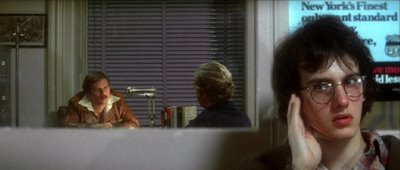
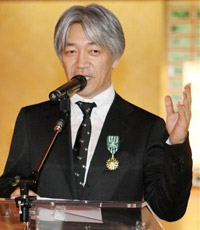 Composer Ryuichi Sakamoto received the Ordre national de la Legion d’honneur (the National Order of the Legion of Honor) last Thursday, according to reports from
Composer Ryuichi Sakamoto received the Ordre national de la Legion d’honneur (the National Order of the Legion of Honor) last Thursday, according to reports from 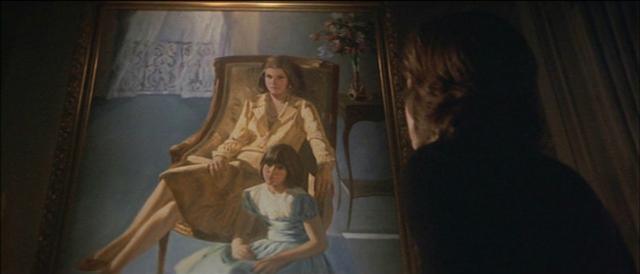
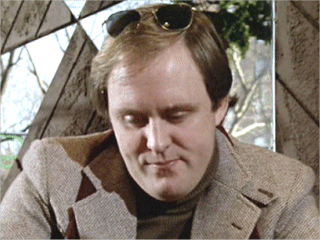 John Lithgow, pictured here from Bob Fosse's All That Jazz, appeared in that film along with Keith Gordon in 1979, right around the time Brian De Palma was working with Gordon on Home Movies and Dressed To Kill. Lithgow had already had his first big role in De Palma's Obsession (1976), and would soon appear in De Palma's Blow Out (1981), and later on, in De Palma's Raising Cain (1992). Lithgow, who is currently filming the fourth season of Showtime's Dexter,
John Lithgow, pictured here from Bob Fosse's All That Jazz, appeared in that film along with Keith Gordon in 1979, right around the time Brian De Palma was working with Gordon on Home Movies and Dressed To Kill. Lithgow had already had his first big role in De Palma's Obsession (1976), and would soon appear in De Palma's Blow Out (1981), and later on, in De Palma's Raising Cain (1992). Lithgow, who is currently filming the fourth season of Showtime's Dexter,  In the shadow of Brian De Palma's Scarface, the director's other collaboration with Al Pacino, Carlito's Way, has its own cult growing. That cult will get a boost this summer when Fabolous releases his new album, Loso's Way, July 28, which features a heavy lineup of guest stars, including Jay-Z, Lil Wayne, and Ne-Yo. Fabolous told
In the shadow of Brian De Palma's Scarface, the director's other collaboration with Al Pacino, Carlito's Way, has its own cult growing. That cult will get a boost this summer when Fabolous releases his new album, Loso's Way, July 28, which features a heavy lineup of guest stars, including Jay-Z, Lil Wayne, and Ne-Yo. Fabolous told 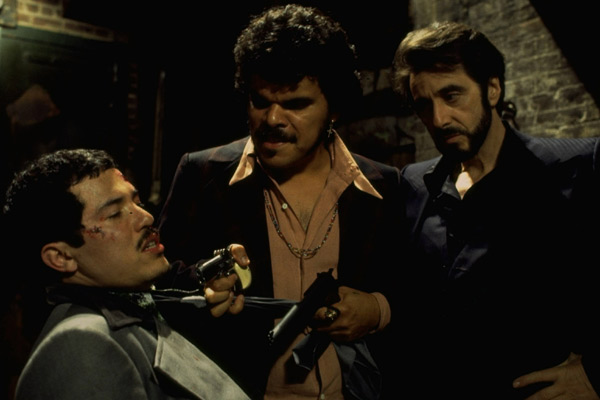 Fabolous says the lead single, "Throw It in the Bag," produced by Tricky Stewart and featuring his labelmate the-Dream, doesn't fit in with the theme, but he explains that "it was so contagious and catchy that we just had to go for it." The motivational "It's My Time," featuring Def Jam newcomer Jeremih and produced by the Runners, which was released in conjunction with "Bag" and appears in a TV ad for the NBA draft, is an example of how Fabolous' and Carlito's stories coincide.
Fabolous says the lead single, "Throw It in the Bag," produced by Tricky Stewart and featuring his labelmate the-Dream, doesn't fit in with the theme, but he explains that "it was so contagious and catchy that we just had to go for it." The motivational "It's My Time," featuring Def Jam newcomer Jeremih and produced by the Runners, which was released in conjunction with "Bag" and appears in a TV ad for the NBA draft, is an example of how Fabolous' and Carlito's stories coincide. 
 Bob Mould, of Hüsker Dü and Sugar fame, was the guest editor at
Bob Mould, of Hüsker Dü and Sugar fame, was the guest editor at